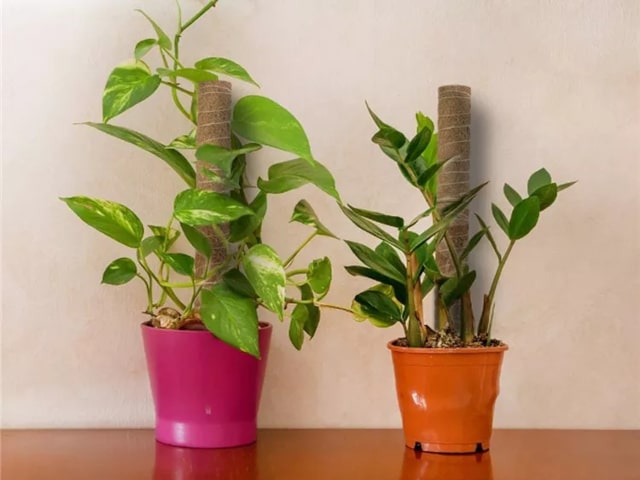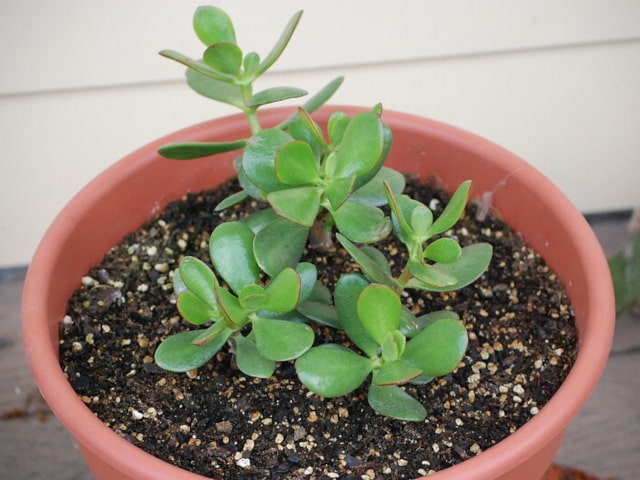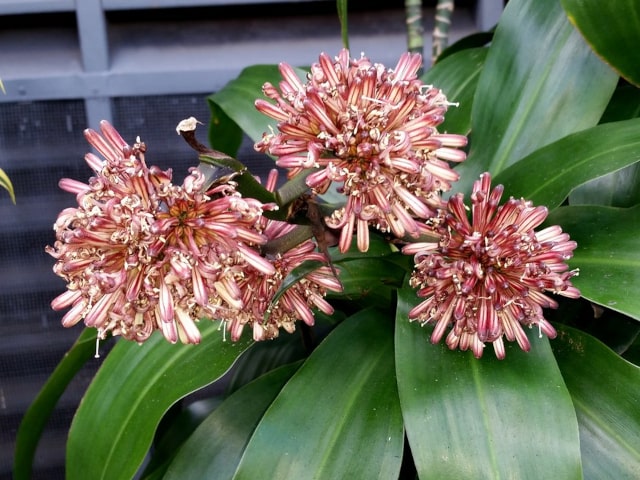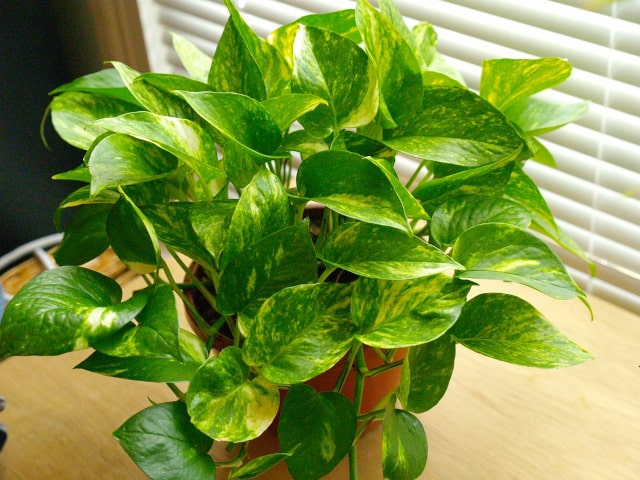
Moss poles are popular new structures you can use to support your houseplants. Climbing vines can particularly benefit from moss poles, but many other types of plants can use this organic support system.
The "trick" is into making your plant into an epiphyte. This is a plant that grows on the surface of another plant, typically a tree, and takes its moisture and nutrients through the air, water, rain or debris accumulated around it. These are typically vines that grow on trees in jungles around the world.
Moss poles are supporting structures that mimic these natural conditions. They create a favorable surface for a vine to grow. Your plant will affix to the moss pole, and will use the moss pole to derive nutrients and surface to grow.
Advantages of Using Moss Poles
Moss poles are excellent for many types of houseplants, particularly vines, because they can mimic perfectly the conditions an epiphyte plant needs. A moss pole allows your plant to grow root attachments, which strengthens the plant. It also provides a more visually striking display.
The best thing about a moss pole is that it can provide your plant with nutrients. As long as you keep it moist, a moss pole will provide your vine with another source of water. This can happen only when the vine is properly attached to the moss pole, so it is important to position the moss pole properly.
This method will help your vine grow larger, with bigger leaves and maybe even bloom. Moss poles allow your plants to grow sturdier and to support themselves much better than when they are simply planted in the soil and with a regular supporting structure such as a stake or a ladder.
Instructions
If you want to use moss poles for houseplants, the first thing you need to figure out is how tall your moss pole needs to be. It should be taller than your plant's tallest vine. It is the only way for your plant to have enough space to climb.
Take the moss pole and soak it in water until it's fully saturated. This moisture will help your plant bind to the pole more easily.
Next, insert the wood end of the moss pole into the soil, making sure that the pole is as close to the center of the container and the base of the plant as possible. When doing this, make sure not to damage the main root system of the plant.
After this, gently wrap the plant's vines around the pole. This should be done with care and patience not to damage your plant's vines. Secure the vines to the pole with twine as you work your way around the pole. You should pay close attention to each node of the plant, where the leaves meet the stem. This is where adventitious roots will form, so it is important to ensure that each node will have proper contact with the moss pole.
Maintenance
If you wish to use moss poles for houseplants in your home, keep in mind that these supporting structures need to be maintained properly. These are made of the organic matter, so you should spray them occasionally or pour some water down the pole during watering. This will ensure that the plants' roots will receive enough water. This will also generate more humidity, which is beneficial for plants that prefer this kind of environment.
Keep in mind that you can remove the twine when you notice that your plant is bound to the moss pole. You should still continue to add to the pole in order to train your plant to grow further up. If you notice that your plant has outgrown the moss pole, you can extend the pole by simply binding a new one to the old one and repeating the whole process. Alternatively, you can allow your plant to vine back down the moss pole. This will make it fill out.
In case the plant outgrows the pot, make sure to replant it into a new, larger container along with its moss pole. If you ever wish to remove a moss pole, you need to be very careful, because it can damage the adventitious roots. This can harm your plant a lot.
Additional Tips
While moss poles are still considered a specialty item, there are more and more nurseries and garden centers that carry them. It is not difficult to find a good moss pole if you decide to use them for your gardening needs.
You may also wish to make your own moss pole. This require some skill, but it is not difficult to do. If you decide to go this route, make sure to choose a sturdy stake, preferably bamboo. Ideally, it should be around 2 or 3 inches in length. Another thing that you will need to make your own moss pole is plenty of sphagnum moss.
If you decide not to use a moss pole, keep in mind that there are many alternatives you can use to support your plants. Bamboo stakes and ladders are a traditional way to go, and they are ideal for vines that naturally wrap around those supporting structures as they grow. However, moss poles are a new, trendy addition that is very attractive and can provide a good support while complementing your plants perfectly. Because of this, more and more people decide to use moss poles in their home gardens.




0 Comments